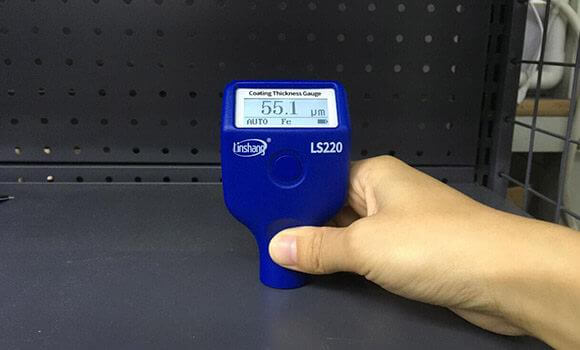Plating Thickness Gauge | Galvanized Layer Thickness Requirements
In the modern production process, galvanizing has become a very common technology, which refers to coating a layer of zinc on the surface of various metal materials to form a galvanized layer. The role of the galvanized layer is mainly to be beautiful, anti-rust. It has a good protection for the materials that are often exposed outdoors and improves the service life and durability of the materials.
In general, we look at the level of electroplating of a product. The main thing is whether the surface is smooth and free of uneven points and then the thickness of the coating is uniform. The same is true for the galvanized layer. Therefore, the more uniform the galvanized layer thickness on the workpiece, the better the product. If the thickness distribution is not uniform, it will bring many effects. For example, in the manufacture of threaded fasteners, the uneven thickness of the galvanized layer will result in poor threadability. So, what are the technical standards for the thickness of the galvanized layer? What are the effects and problems caused by uneven thickness? then, let's discuss it together.
1. Thickness requirements of galvanized layer
Different electro-galvanizing methods have different requirements on thickness standards. Taking electro-galvanizing as an example, it is mainly used in fields of great importance to the national economy, such as machinery manufacturing, electronics, precision instruments, chemical industry and light industry. The thick galvanized layer can effectively protect the steel substrate and slow down the corrosion rate in acid and alkali environments. The galvanized layer thickness requirements are as follows:
● If the thickness of the workpiece is greater than or equal to 6mm, the average thickness should be greater than 85 microns and the local thickness should be greater than 70 microns;
● If the thickness of the workpiece is less than 6mm and greater than 3mm. The average thickness should be greater than 70 microns and the local thickness should be greater than 55 microns;
● If the thickness of the workpiece is less than 3mm and greater than 1.5mm, the average thickness should be greater than 55 microns. And the local thickness should be greater than 45 microns.
2. Effect of uneven galvanized layer thickness
The factors that affect the galvanized layer thickness are different, mainly including the metal composition of the substrate, the surface roughness of the substrate, the geometric dimensions of the workpiece, the hot-dip galvanizing process and so on. However, if the galvanized layer thickness is not uniform, the impact is the same, mainly as follows:
(1) Decreased corrosion resistance
The more severe the galvanized layer is exposed to, the higher the thickness required and the stronger its corrosion resistance. If the thickness is insufficient and the service conditions are bad, the resistance and protection ability of the galvanized layer is weaker. The corrosion resistance depends on the thinnest part of the galvanized layer.
(2) Surface defects
Where the galvanized layer is too thick, it will be rough, not smooth enough to touch and sometimes spots and nodules may appear. The thin layer will appear dark, without much gloss.
(3) Increase the cost of electroplating
After local corrosion of the workpiece, it will become an unqualified product. It can only be processed again for reuse. Therefore, the excessively thick places will only waste the plating metal. After all, to protect the thinner parts from corrosion, only the average thickness can be increased. This leads to higher processing costs.
3. How to detect the galvanized layer thickness with plating thickness gauge?
In order to make the thickness of each part of the coating on the workpiece as close as possible, we must understand the factors that affect the uniformity of the thickness distribution. There are many methods that can be used to detect the galvanized layer thickness today, such as the chronofluid method, the droplet side thickness method and X-ray Spectroscopy, etc. These methods are time-consuming and costly, so people will use Linshang plating thickness gauge LS220H for detection. LS220H plating thickness gauge has simple operation and high accuracy.
LS220H Plating Thickness Gauge
In actual production, when the thickness uniformity is poor, we have to greatly increase the average thickness, which is not uncommon in production. No matter from the aspects of corrosion resistance, appearance, machining performance, etc., we all hope to improve the thickness uniformity of the galvanized layer. If you want to know about the plating thickness gauge used to test the thin plating thickness below 10μm, please read "Plating Thickness Gauge | How To Measure Plating Thickness?".
- High precision coating thickness gauge for used car
- Automotive paint protection films coating thickness gauge
- Plating Thickness Measuring Instrument for Detecting Anti-corrosion Coating
- Linshang LS220, LS191, LS160A– Necessary for Car Cover Inspection
- Coating Thickness Gauge for Second Hand Vehicle
- Zero Adjustment Step of Coating Thickness Gauge
